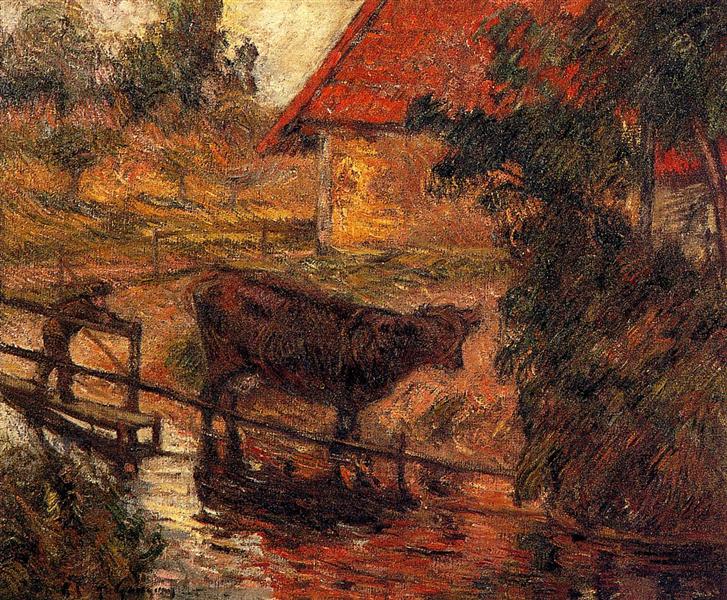Description
Paul Gauguin's painting "Spa Resort" (1885) is a work that captures a fleeting moment in everyday life through the filter of the Post-Impressionist master's artistic sensibility. In this work, Gauguin furthers his search for the essence of human experience, using a style that reframes reality through color and composition. The work is not only a testament to his technical skill, but also reflects his interest in themes of nature and human interaction.
When looking at Spa, one can notice a vibrant atmosphere created by the carefully selected color palette. The use of warm, bright tones, which predominate in this work, suggests a golden light enveloping the figures and the surroundings. The yellow, orange, and green hues are arranged in a way that seems to dance with each other, generating a visual dialogue that draws the eye to the center of the work. This color choice resonates with the influences of Impressionism, while at the same time anticipating the unique way in which Gauguin would use color in his later works.
The composition is cleverly structured, with a balance between the human figures and the surrounding natural landscape. In the foreground, several women can be seen beside a body of water, exemplifying daily life at a seaside resort. Through these figures, Gauguin is not only capturing a scene of domestic life, but symbolically reflecting the intimacy and pleasure associated with attending to one's own well-being. The women, who seem absorbed in their activities, bring a sense of community and warmth to the work. Their forms, although rendered in a more stylized than realistic manner, retain a grace and fluidity that allow us to glimpse the essence of their interaction with their surroundings.
Gauguin's painting technique, marked by loose strokes and bold application of color, induces a sense of dynamism. Shadows and light are hinted at rather than defined, creating an ethereal atmosphere that invites the viewer to immerse themselves in the scene. This technical approach denotes Gauguin's transition to a more symbolic and expressionist style, in which he seeks to transcend literal representation and instead evoke sensations and emotions. It is particularly interesting to note that in his work, Gauguin would begin to move away from the rigor of naturalism, seeking a deeper connection with the spirit of the place and the people who inhabit it.
"Bath Resort" falls at a time when Gauguin was already developing his unique artistic vision, one that would become more pronounced in his later works in Polynesia. Although this work may seem contemporary and light compared to his later works, it is a crucial step in his evolution as an artist. Gauguin, through the depiction of a simple moment, offers us an introspective and calm look at the simplicity and beauty of life.
The historical context of the work also deserves mention. Commissioned in a period when painting was seeking new forms of visual communication in reaction to industrialization and social change, “Balneario” serves as a reminder of the inherent connection between art and everyday life. Gauguin, not yet fully immersed in his future exploration of more exotic cultures, captures here the spirit of his time through the simplicity and playfulness that influence human interactions.
In this sense, "Bathhouse" is not only a shining example of Gauguin's mastery in the use of color and form, but it is also a prelude to his ambitious journey into the unknown and the symbolic in art. Thus, this painting stands out not only for its superficial beauty, but for the depth hidden behind every stroke, every color and every figure, offering the viewer a window into the artist's intimate world.
KUADROS ©, a famous painting on your wall.
Hand-made oil painting reproductions, with the quality of professional artists and the distinctive seal of KUADROS ©.
Painting reproduction service with satisfaction guarantee. If you are not completely satisfied with the replica of your painting, we will refund 100% of your money.

